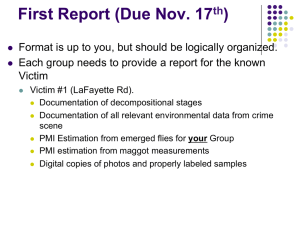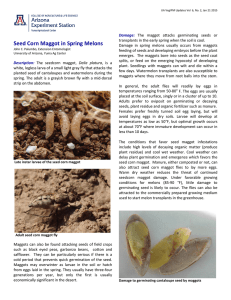Forensic Flies The Blowflies
advertisement
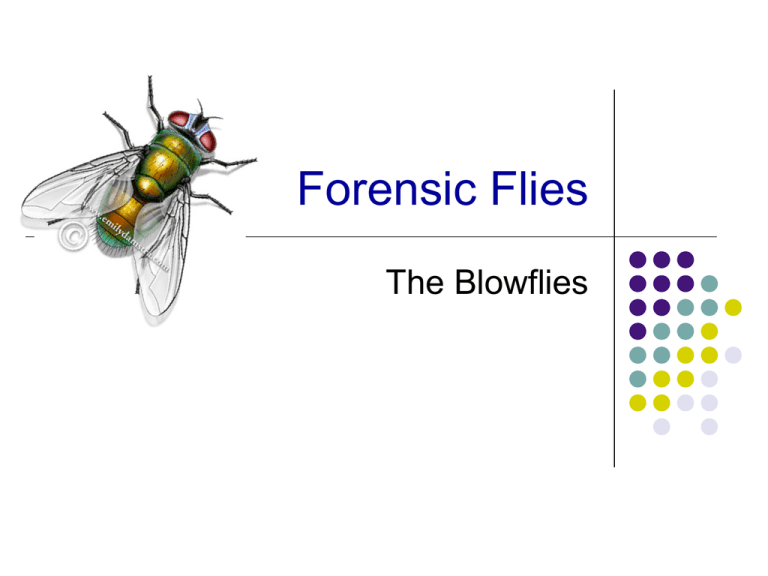
Forensic Flies The Blowflies Blowflies (Family Calliphoridae) Common name: blue/green bottles l Insect group most often used in forensic investigations l Valuable because l l l l l Extremely good at finding cadavers Often the first to arrive Generally associated with particular stages of decomposition Developmentally predictable Lifehistory l l Adult – disperses, finds appropriate place to lay eggs (cadaver) Eggs – similar in texture to fine sawdust. l l l Larvae (maggots) l Crop Usually laid (oviposited) in or near moist areas of the body (especially the orifices of the head). Also found in hair or folds of tissue or clothing. Very small and often overlooked, especially early in decomposition l l 1st instar (stage) – small (>5mm), often overlooked 2nd instar (stage) 3rd instar (stage) l l l Feeding Post-feeding Puparia l A puparia is actually a pupa enclosed in the hardened skin of the last stage maggot Oviposition Eggs Female blowfly on gunshot victim Mass oviposition on pig Eggs in nasal passage of homicide victim First stage maggot l l l Small to very small, often nearly transparent Occur close to oviposition sites May not be apparent if feeding in nasal passages, throat, or other cryptic areas Hatched eggs Second Stage Larvae l l l Larger and more opaque Crop visible through skin May form visible external masses, although feeding is usually still confined to discrete locations (face, wound, etc.) Top Down l l In general, an intact cadaver without external trauma will be decomposed from the head down and from the core outward to the extremities Colonization Maggot elsewhere may indicate wounds, pre/post-mortem soiling, or sexual trauma. Extensive colonization of buttocks Scrotum Third Instar Maggot l Final stage maggots feed voraciously l l l Large numbers can form a ‘maggot mass’, a concentration of maggots sufficient to generate significant heat through the action of proteolytic enzymes Once feeding has finished, the transparent crop will become obscured by lipids Maggots will then abandon the cadaver to seek sheltered places to pupate. Post-feeding l After finishing feeding, 3rd instars transition into post feeding larvae l l l l l l characterized by wandering behavior and fatty deposits under skin migrate "en masse" away from the body strong excreted enzymes often mark the trail of migration migration is usually in the direction of gravity migration can be upwards of several feet to yards from the body larvae attempt to burrow into substrate for protection Puparia l l l Once post-feeding larvae have decided on a location, the puparia forms At outdoor crime scenes, this may be in the soil, under the cadaver, or under nearby debris In indoor crime scenes, wandering maggots may be restricted and puparia can occur anywhere on or off the cadaver Adult Emergence l l l l l Puparia may remain dormant for long periods of time (overwinter) or adults may issue within 7-21 days (depending on the species and temperature). To emerge, the adult fly must break the puparia open along a preformed line of weakness Uses a ptilinum, an inflatable balloon on the front of head Newly emerged flies are soft, the ptilinum is still visible, and are lighter in color, a stage called ‘teneral’. Teneral adults last point where the PMI can be accurately estimated. ptilinum Adult Identification Tentative identification is possible for many species using dichotomous keys l Confirmation of the identity of blowflies at the species level is done by taxonomic or forensic experts l Important Species in Our Region l The ‘bluebottles’ Calliphora vomitoria and C. vicina l l C. vomitoria, rural, shaded, or wooded C. vicina more urban, will enter dwellings Black ‘cheeks’ orange beard orange ‘cheeks’ black beard The Greenbottles l l Lucilia coeruleiviridis, Lucilia (formerly Phaenicia) sericata, Lucilia illustris Cochliomyia macellaria L. coruleiviridis L. sericata C. macellaria L. illustris l l L. coruleiviridis one of the most common greenbottles in eastern North America, L. illustris, rural / forested. L. sericata, worldwide distribution, urban and rural, will enter dwellings Cochliomyia macellaria (secondary screwworm) ‘Black’ blowflies l Phormia regina, Protophormia terraenovae l l l P. regina summer species at northern temperate latitudes spring/fall in south. Rural and urban, will enter dwellings. Replaced by P. terraenovae at high altitudes and latitudes Phormia regina Black spiracle Protophormia terraenovae Orange spiracle Identification of Maggots l l l Identification of 1st and 2nd stage maggots is very difficult. Maggots in general, have few external characteristics that could be used to differentiate among species Some third stage maggots are relatively easy to identify Head (anterior) End Rear (posterior) End Mouth hook and denticular sclerites Spiracles Sampling the Scene
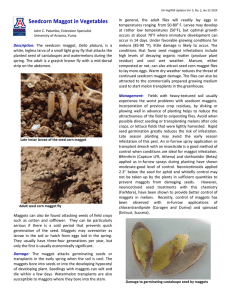
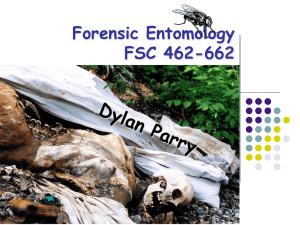
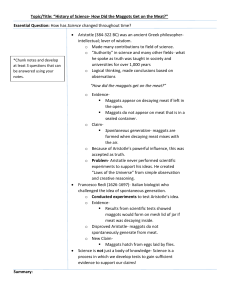

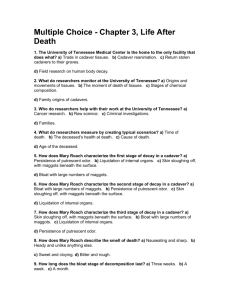
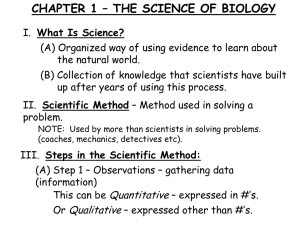
![FSE 06 Maggots decomposers [MS Word Document, 95.5 KB]](http://s3.studylib.net/store/data/008939373_1-201a83c3f6279424de48dd9ff3491da9-300x300.png)
